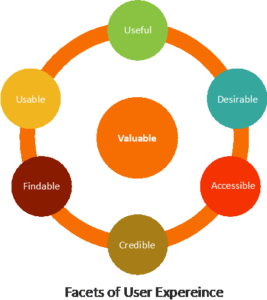Today, organizations are increasingly promoting digital transformation to build digital capabilities. However, it does not matter how great you think your product is, if your users do not agree. Today, customers are more influential than ever, able to shift market demands and define a company’s success with the power of digital word-of-mouth. We’ve reached an era where design is a key competitive advantage.
What is Design Thinking?
Design thinking is a human-centered design method — focused on the customer or whoever the end users may be. Design thinking requires a high degree of empathy for the end user, and thus, in-depth knowledge of your audience. It is solution-focused, action-oriented, and requires a habit of experimentation, which involves creating, prototyping, failing fast and learning from those failures!
What is UX?
UX primarily focuses on two things – the User and the Experience. Give your users a positive experience and they will reward you with their trust and their business. In a recent study, from Forrester Research, a well- designed user interface could raise your website’s conversion rate by up to a 200%, and a better UX design could yield conversion rates up to 400%.

Why UX?
While having a great product is paramount, today, it is not enough to keep you ahead of the curve. This is why investing into UX design has proved to be a game-changing strategy. A delightful experience has been proven to earn the users’ interest, business, and most of all – their loyalty. According to Forbes, users expect pages to load in two seconds, and after three seconds, up to 40% of users will abandon your site, while 79% will search for another site to complete their task.
Benefits of UX
The key benefits of a UX focused design are:
- Increased productivity
- Increased sales
- Reduced training and support costs
- Reduced development time and costs
- Reduced maintenance costs
- Increased customer satisfaction and loyalty
Shift in corporate culture – The need of the hour
Many companies want to improve the user experience and proclaim to focus on the customer. Creating a design culture involves redefining the company’s strategy, people, processes, practices, systems, and structures. This is how companies can truly reap meaningful benefits from design.
Gartner Research reports that 89% of companies expect to compete mostly on the basis of customer experience this year. Being able to survive in The Age of the Customer, takes creativity because it demands generating, embracing, and executing new ideas.
Becoming design-driven
Becoming a design-driven company doesn’t happen overnight, nor is it something that is absolute. It’s a process of transformation. Design-driven companies seek to go far beyond form and function, and extend their potential by designing for meaning. They value solving the customer’s problem instead of simply pushing an existing solution. And by this, they provide the right conditions to create desirable products and services that customers love.
Closing remarks
Given that innovation and leading customer success are our guiding principles, design is critical for innovators. Investigations into radical new technologies should go hand-in-hand with new design explorations. Bringing business, IT, and other stakeholders together has the added benefit that the pace of decision-making speeds up. Let’s balance desirability, viability, and feasibility to deliver customer-driven products!
These postings are my own and do not necessarily represent BMC's position, strategies, or opinion.
See an error or have a suggestion? Please let us know by emailing blogs@bmc.com.






